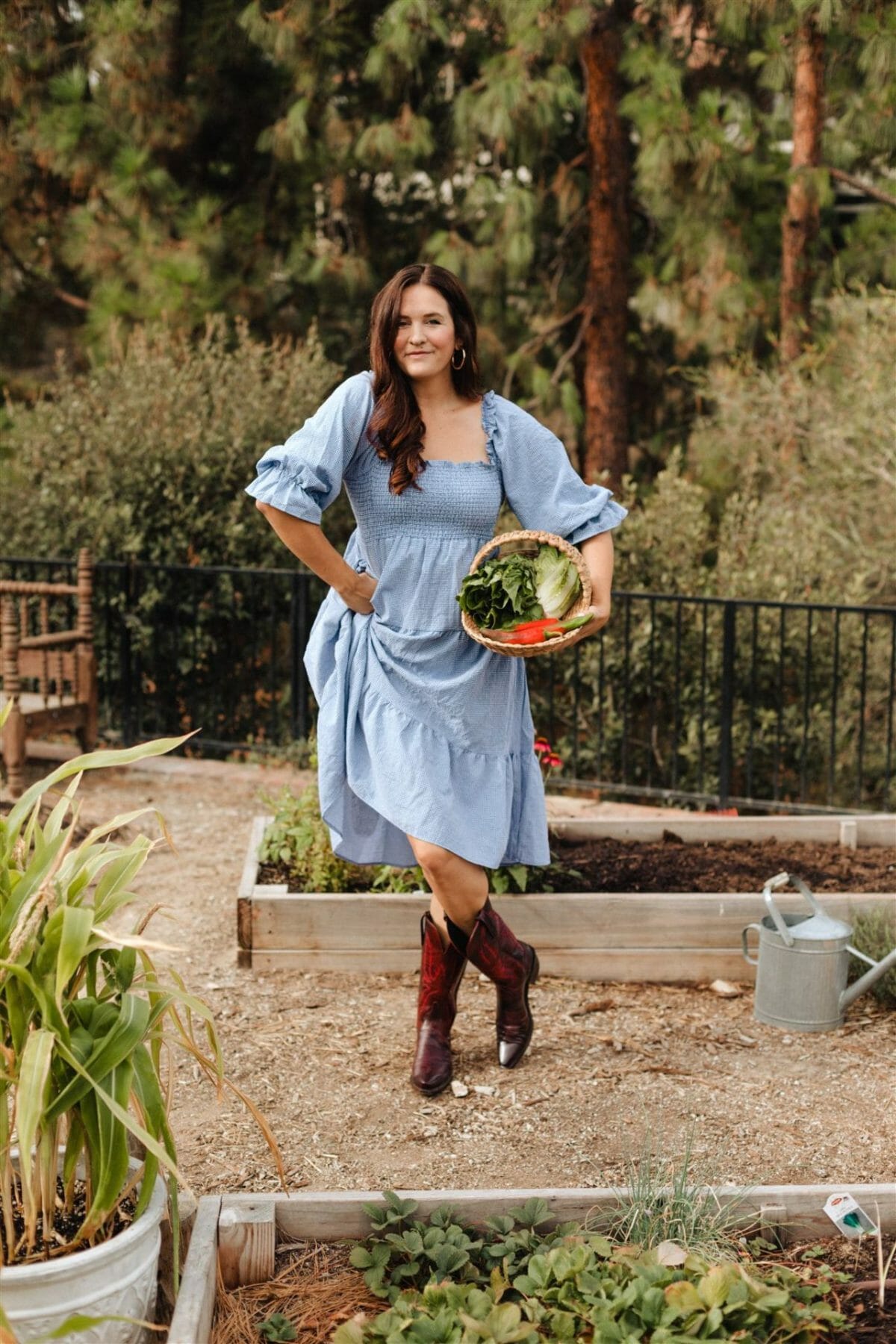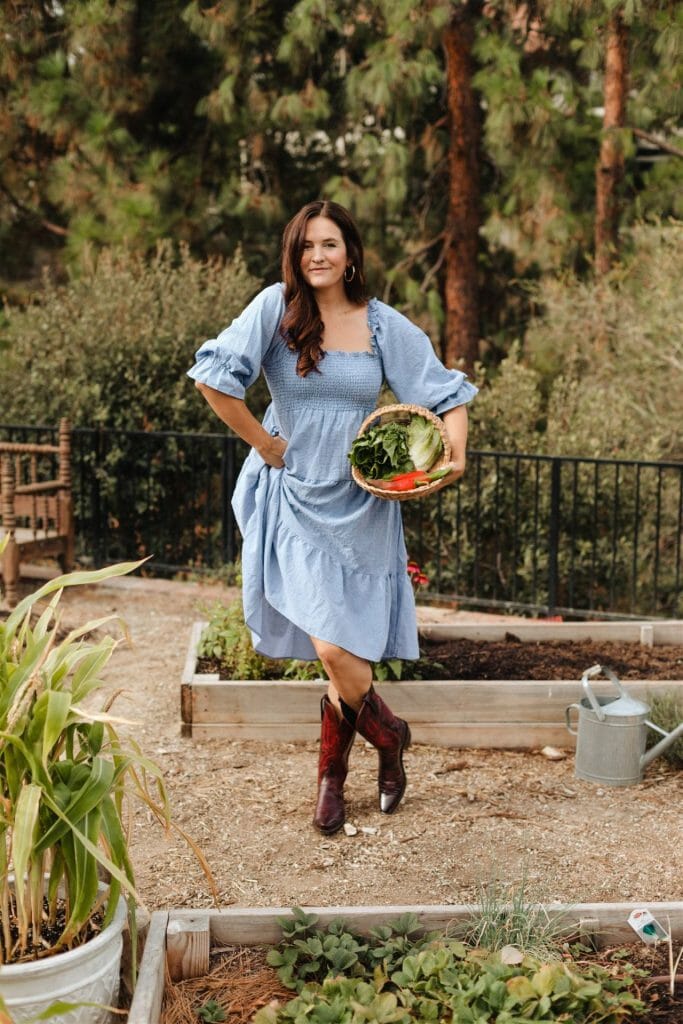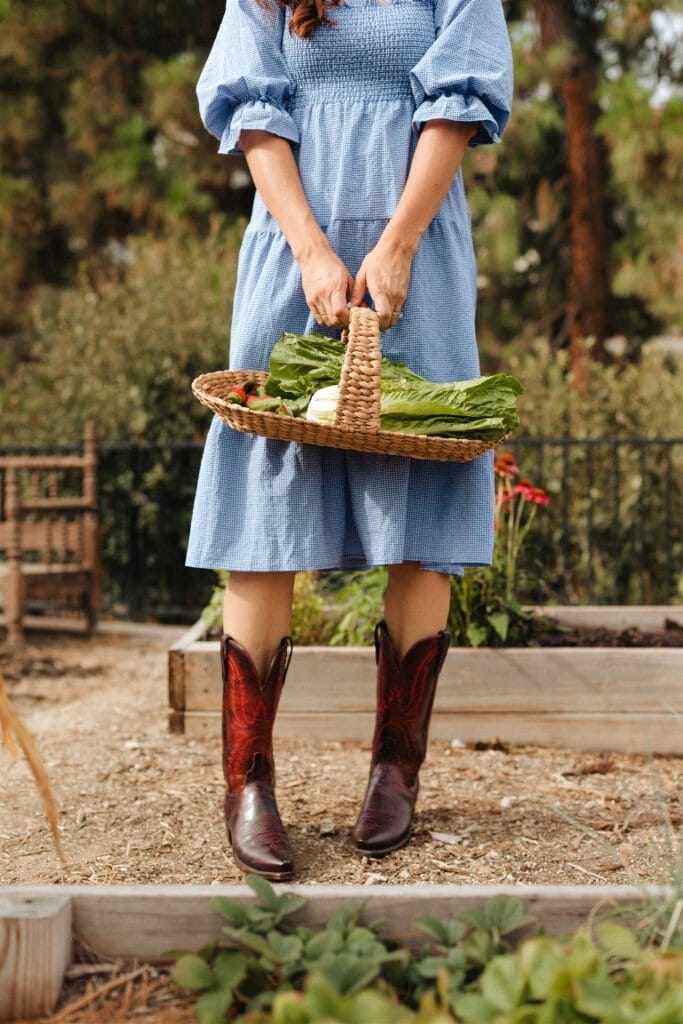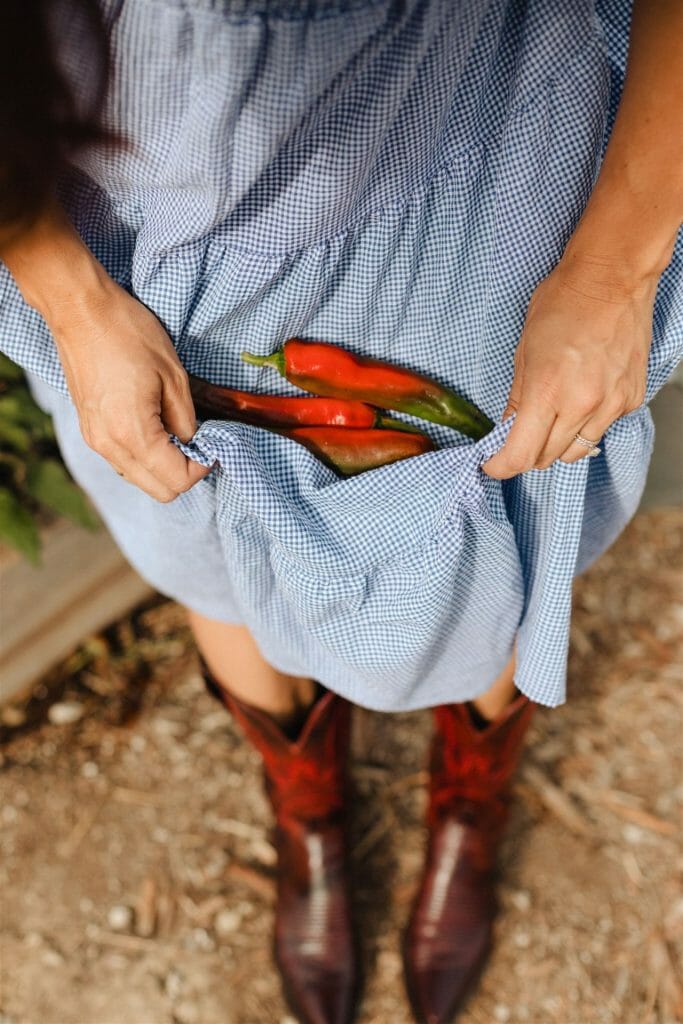
Plan a Vegetable Garden to Replace the Grocery Store
I started brainstorming about how to approach this topic as preparation for a *Podcast about replacing the grocery store with your vegetable garden. I immediately thought of the “big rock” analogy made famous in a different way by Stephen Covey. The analogy is that your life, or in this case, your garden is a jar. And to be sure that your life/garden/jar is full of what you want most, you must prioritize those things, filling the jar with them first. Those are your big rocks. You place your big rocks in the jar, then pebbles, then sand to fill in the gaps. If all you did was dump sand into your jar unknowingly, you’d fill up your jar with nonsense and have no room for your big rocks.
*If you want to listen to that episode, it’s on Jill Winger’s, Old Fashioned On Purpose podcast HERE.

Planning Your Replacement Vegetable Garden: Where to Start
When planning for replacing your veggies, start small by going big in one way, with one crop. For example, perhaps it’s tomatoes. Then identify how many tomatoes you either use or need to feed your size family on average. For me, I use tomatoes about three times a week in the Summer and year-round via canned tomatoes in sauce for varying recipes, as sun-dried tomatoes, or as a pasta sauce. I’d say we could use probably 25 jars of marinara at least! From there you begin to plan the tomato patch,
From there, you go on and on with your hero veggies (big rocks) planning accordingly based on how much space you have. I garden about 500 square feet which isn’t enough to fully replace ALL produce in my vegetable garden – not yet at least. So I choose about three hero veggies and then plan out what companions go well with them, and so on.
To continue planning, I love to plant basil with tomatoes. It’s said to make them sweeter! I love pesto year-round so I plan for that. From there, I move on to zucchini, potatoes, onions, and peppers.
Planning Around Your Cooking
Another way that I like to plan is based on my cooking habits. For instance, with peppers, I really only use hot peppers for salsa, jams, or fresh in a few recipes in the summer (like poppers or jalapeno ranch dressing). We don’t eat as many as you’d think, so I like to have a solid plan, so as to not take up space with unnecessary plants. Last year we grew tomatillos really well, but it turns out, we don’t really need that much salsa verde, so… I probably won’t do those again. Or for some families, they use salsa verde so much that they’d have to only grow tomatillos., therefore not making them a viable hero veggie – they’re too heroic and would take over!
One way that I have tracked our vegetable usage is simply by making a list of vegetables and taping it to the inside of our cabinet. Every time I use a veg, I mark a tally next to it and track what our real usage was. This is hard to keep up with though, but is most accurate!
Also keep in mind that some common products, like marinara sauce, take more vegetables than you realize. Get to know how much of each veggie goes into each dish that your family likes.
Average Vegetable Usage for A Family of Four
In the event that you’d like me to just do some quick math for you, I got ya covered. Here is a list of common vegetables and how many plants you need to feed the average family of four. I’ll list here what you need to grow per person and for four people.
Additionally, the recommended space per person to garden enough vegetables to replace the grocery store is 200-250 square feet for one person and about 1,000 square feet for a family of four (minimally). I’ve got to get more space!
Bush Beans 12- 15 plants/ 48-60 plants
Beets 1-3 plants/ 4-12 plants
Broccoli 6-10 plants / 24-40 plants
Celery 6 plants / 24 plants
Cucumber 1-3 plants / 4 – 12 plants
Carrots 48 plants/ 192 plants
Corn 10-15 plants / 40-60 plants
Eggplant 2 plants/ 8 plants
Leaf Lettuce 24 plants/ 96 plants
Melon 1-2 plants/ 4-8 plants
Kale 4 plants/ 16 plants
Onion 12-20 sets/ 48-80 sets
Peas 15-20 plants/ 60-80 plants
Pepper 3-5 plants/ 12-20 plants
Potato 10 plants/ 40 plants
Spinach 30-60 plants/ 120 – 240 plants
Squash 1-2 plants/ 4-8 plants
Tomato 2-4 plants/ 8-16 plants
Zucchini 1-2 plants 2-8 plants
I hope this helps you as you plan out your garden and future, as it certainly can be a bit of math to know how much of each thing to grow. I highly recommend using and tracking things in a garden journal (read a post about that HERE).
I also have another post with more actual tips for gardening to replace the grocery store HERE.
It’s all trial and error as well, so enjoy the ride!


